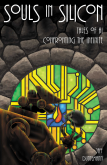Yes, I know I haven’t posted since the end of June, but I had a very busy July. So bear with me; I’m trying to get back in the Contra saddle on a much more regular basis. A fair bit of good stuff has piled up in my notes. Perforce:
- WordStar 7 for DOS can now be had as a free download, thanks to the work of SF author Robert J. Sawyer. The product has changed hands a great many times down the decades, and as best we can tell it’s now abandonware. Caution suggests that if you’re a retrocomputing fan, better snag it now, before somebody pops up with a copyright objection.
- The Heartland Institute has a very nice free 82-page full-color PDF overview of climate issues from a skeptical perspective. Beyond global warming it covers sea levels, droughts, violent weather, crop yields, and much else. A lot of the data cited comes from the NOAA, which I still consider a reliable source.
- There’s a new image-generating AI called FLUX from Black Forest Labs that apparently knows how many fingers and toes humans have. Sorry, guys: I’ll believe it when I test it.
- Chris Martz put together a map displaying the record hottest day in August for all 50 states. The hottest August temp we’ve ever seen in Arizona was in…1905. Not much of a climate apocalypse, eh?
- Solar cycle 25 has handed us the highest sunspot count in 23 years. This cycle was supposed to be weak. And we haven’t hit the likely peak yet. We may not see that peak until 2025 or 26.
- New research shows that elenolic acid, found in olives and olive leaves, brings down blood sugar and reduces body weight. I have to wonder if this is why the Mediterranean Diet appears to work. Elenolic acid is available OTC, and I’m tempted to try it and see if it will trim a little fat off my waistline.
- Here’s a nice BBC piece about an obscure British clergyman who predicted the existence of black holes in…1783. The guy should be way better known than he is, given that he also identified the inverse square law in 1750.
- For any of several reasons, electric vehicles are dangerous. [Link removed by me; see comments.]
- Copyright issues in training AIs are ongoing. MIT summarizes the use of "copyright traps" that embed nonsense sentences into text by hiding it somehow. (White text on white?) This allows software to determine if a piece of text was used in training. (Just how is too complex to explain here. Read the article.) My response is that finding "invisible" text in blocks of text is an easy challenge for software, especially with Web content. I envision a Web crawler that checks for copyright traps and either refuses to add trapped content to an index, or else scrubs the traps outright before copying the scrubbed text to a local database used for AI training. Bottom line: There is no easy solution to this problem.















